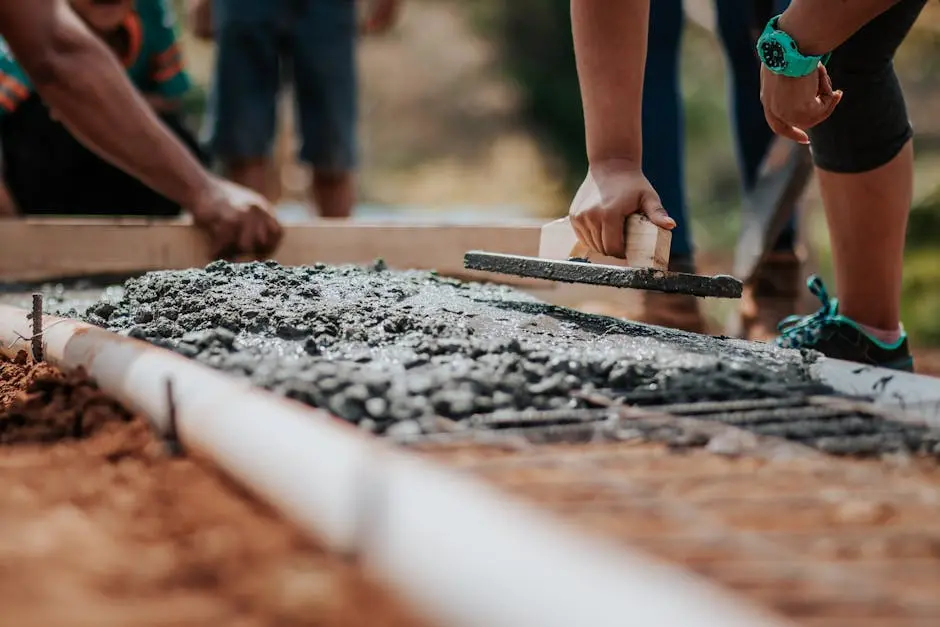Concrete grinding is an essential step for achieving a polished and smooth surface, but it’s easy to make mistakes if you’re not careful. Understanding common pitfalls can save you time, effort, and money. In this blog, we’ll guide you through some typical mistakes and provide tips to avoid them, so you can achieve the best results with your concrete grinding projects.
1. Skipping the Assessment of the Concrete Surface
It’s crucial to assess the condition of the concrete before you start grinding. Look for any cracks, joints, or weak spots that need repairs. Failing to assess can lead to uneven grinding and further damage to the surface.
Taking the time to perform a thorough assessment can save you from unexpected issues down the road. Check for moisture levels, as this can also affect your grinding process. Concrete that is too wet or too dry can present different challenges, and addressing these conditions beforehand will make your work much more efficient.
Another key aspect of assessment is understanding the type of concrete you’re dealing with. Different mixes and ages of concrete have varying hardness, which can affect the choice of grinding tools you’ll need. By knowing what you’re working with, you can better plan your approach and ensure you have the right equipment for the job.
2. Using the Wrong Grinding Tools
The type of tools you use can significantly impact the results. Ensure you have the right diamond tooling for the hardness of the concrete. Using incorrect tools can result in inefficient grinding and poor-quality finishes.
Diamond tooling comes in different grits and bonds, each suited for specific tasks. For instance, hard concrete requires a softer bond tool to effectively grind the surface. Conversely, softer concrete needs a harder bond tool to avoid premature wear. Using the right tool not only improves the quality of the finish but also extends the life of your equipment.
Additionally, the size and type of the grinding machine should match the scale of your project. Small handheld grinders are ideal for tight spaces and edges, while larger floor machines provide efficiency for expansive surfaces. Failure to match the tool to the task can lead to unnecessary frustration and suboptimal results.
3. Not Wearing Proper Safety Gear
Safety should always be a priority. Wear protective gear such as gloves, masks, and goggles to shield yourself from dust and debris. Ignoring safety measures can lead to severe injuries.
Concrete grinding generates a lot of dust, which can pose serious health risks if inhaled. A high-quality respirator mask can protect your lungs from harmful particles. Machines can also fling small debris at high speeds, making safety goggles essential to protect your eyes. Don’t forget hearing protection, as grinding machines can be quite loud and prolonged exposure can damage your hearing.
4. Applying Uneven Pressure
Maintaining even pressure is key to achieving a smooth finish. Uneven pressure can cause gouges and an inconsistent surface. Distribute your weight and movements evenly.
An easy way to ensure even pressure is by keeping a steady hand and moving in a consistent pattern. It may help to practice on a small, inconspicuous section first to get a feel for the machine. Regularly check your progress to catch any pressure imbalances early, before they become noticeable.
5. Overlooking the Importance of Dust Control
Dust control is essential for a clean work environment and quality finish. Use vacuums and dust shrouds to minimize airborne dust. Skipping dust control can lead to health hazards and a messy workspace.
Effective dust control also improves visibility while you work, allowing you to see imperfections that need addressing. This can result in a much smoother and more polished finish. Invest in a good industrial vacuum and dust collection system to keep your workspace clean and safe.
6. Neglecting to Check the Grinding Machine
Ensure your grinding machine is in good working condition. Regular maintenance and checks can prevent malfunctions that may compromise your project. A poorly maintained machine can lead to subpar grinding results.
Regularly check the condition of your diamond tooling and replace it when it becomes worn. A well-maintained machine will run more efficiently, saving you time and effort in the long run. Also, keep an eye on the electric components and ensure all connections are secure to avoid any sudden power failures.


